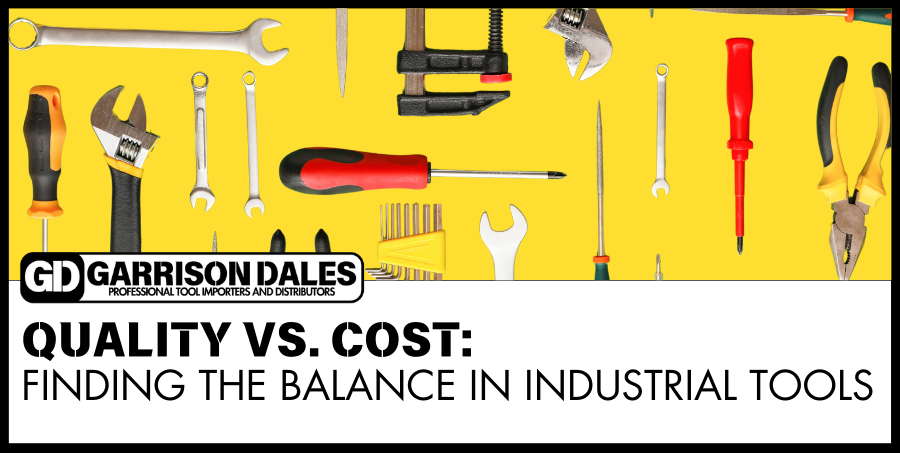Quality vs. Cost: Finding the Balance in Industrial Tools

Quality vs. Cost: Finding the Balance in Industrial Tools
In the industrial tool market, businesses are often faced with the dilemma of choosing between high-quality tools and more cost-effective options. Striking the right balance between quality and cost is crucial for maintaining productivity, ensuring safety, and maximizing return on investment. This blog explores the key considerations for finding this balance and making informed purchasing decisions.
The Importance of Quality
1. Durability and Longevity: High-quality industrial tools are designed to withstand rigorous use and harsh working conditions. Investing in durable tools can reduce the frequency of replacements, saving money in the long run.
2. Safety and Reliability: Quality tools are engineered to meet stringent safety standards, minimizing the risk of accidents and injuries. Reliable tools also ensure consistent performance, which is essential for maintaining productivity and meeting project deadlines.
3. Precision and Efficiency: High-quality tools often feature advanced engineering and design, providing greater precision and efficiency in operations. This can lead to better work outcomes and higher satisfaction for both businesses and their clients.
The Role of Cost
1. Budget Constraints: Many businesses operate within tight budget constraints, making it tempting to opt for cheaper tools. However, it is important to consider the total cost of ownership rather than just the initial purchase price.
2. Cost-Benefit Analysis: Performing a cost-benefit analysis can help businesses understand the long-term financial impact of their tool purchases. While high-quality tools may have a higher upfront cost, their durability and reliability can lead to cost savings over time.
3. Volume Discounts: Purchasing in bulk or negotiating volume discounts with suppliers can help businesses manage costs without compromising on quality. This strategy allows companies to benefit from economies of scale and secure better pricing.
Strategies for Finding the Balance
1. Assessing Needs: Businesses should carefully assess their specific needs and requirements before making tool purchases. Understanding the demands of the tasks at hand can help identify the appropriate balance between quality and cost.
2. Research and Reviews: Conducting thorough research and reading reviews can provide valuable insights into the performance and reliability of different tools. Customer feedback and industry ratings can help businesses make informed decisions.
3. Supplier Relationships: Building strong relationships with reputable suppliers can lead to better deals and access to high-quality tools at competitive prices. Suppliers who understand a business's needs are more likely to offer tailored solutions.
4. Total Cost of Ownership: Considering the total cost of ownership, including maintenance, repairs, and replacements, is essential when evaluating tool purchases. High-quality tools that require less frequent servicing and have longer lifespans can offer better value in the long run.
Conclusion
Finding the right balance between quality and cost in industrial tools is a critical decision for any business. By prioritizing durability, safety, and efficiency while managing budget constraints, companies can make strategic purchases that enhance their operations and profitability. At Garrison Dales, we are committed to helping our customers find the best tools that meet their needs and budget. Stay tuned to our blog for more tips and insights on making smart tool investments.

